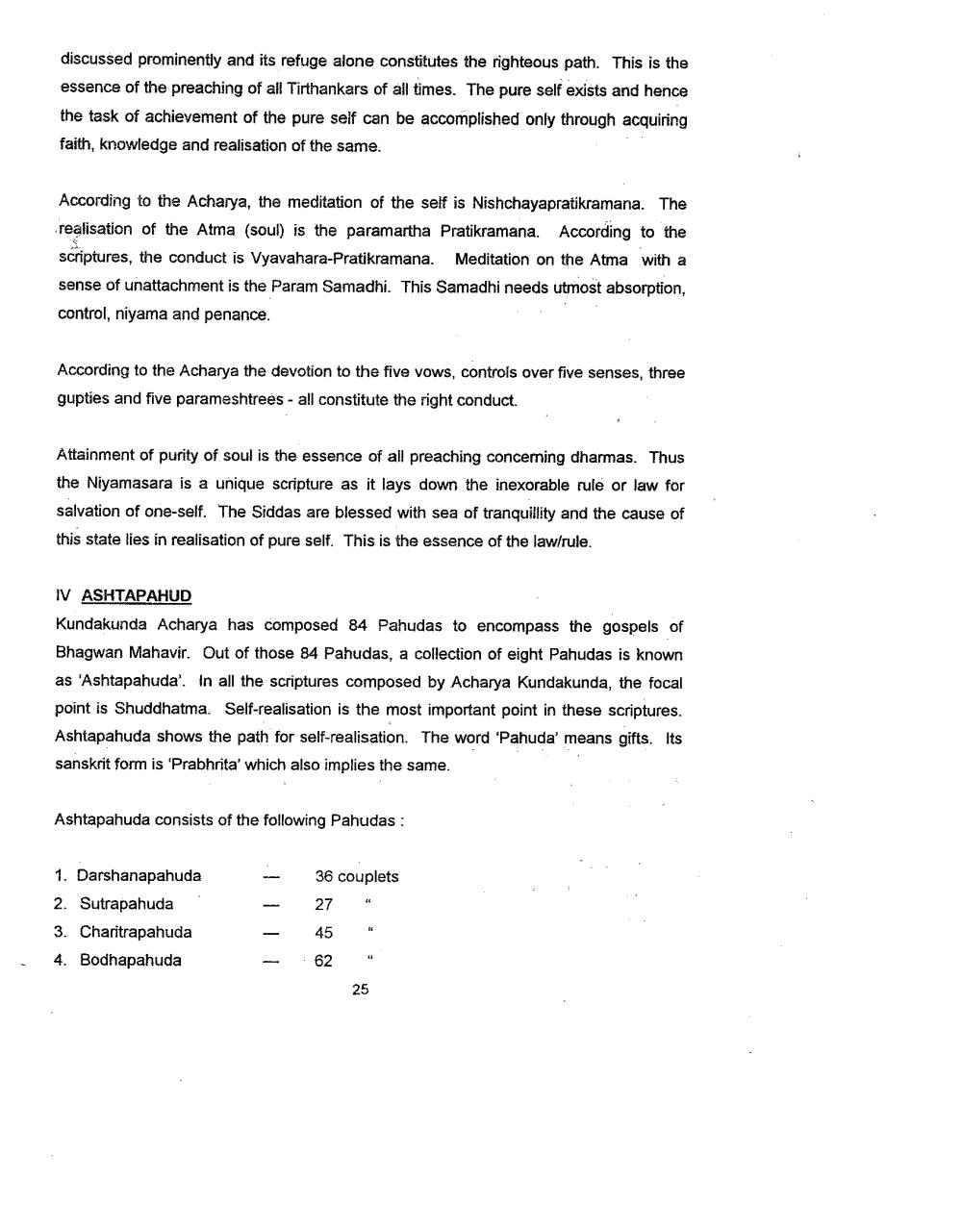________________
discussed prominently and its refuge alone constitutes the righteous path. This is the essence of the preaching of all Tirthankars of all times. The pure self exists and hence the task of achievement of the pure self can be accomplished only through acquiring faith, knowledge and realisation of the same.
According to the Acharya, the meditation of the self is Nishchayapratikramana. The realisation of the Atma (soul) is the paramartha Pratikramana. According to the scriptures, the conduct is Vyavahara-Pratikramana. Meditation on the Atma with a sense of unattachment is the Param Samadhi. This Samadhi needs utmost absorption, control, niyama and penance.
According to the Acharya the devotion to the five vows, controls over five senses, three gupties and five parameshtrees - all constitute the right conduct.
Attainment of purity of soul is the essence of all preaching concerning dharmas. Thus the Niyamasara is a unique scripture as it lays down the inexorable rule or law for salvation of one-self. The Siddas are blessed with sea of tranquillity and the cause of this state lies in realisation of pure self. This is the essence of the law/rule.
IV ASHTAPAHUD Kundakunda Acharya has composed 84 Pahudas to encompass the gospels of Bhagwan Mahavir. Out of those 84 Pahudas, a collection of eight Pahudas is known as 'Ashtapahuda'. In all the scriptures composed by Acharya Kundakunda, the focal point is Shuddhatma. Self-realisation is the most important point in these scriptures. Ashtapahuda shows the path for self-realisation. The word 'Pahuda' means gifts. Its sanskrit form is 'Prabhrita' which also implies the same.
Ashtapahuda consists of the following Pahudas:
36 couplets
1. Darshanapahuda 2. Sutrapahuda 3. Charitrapahuda 4. Bodhapahuda




